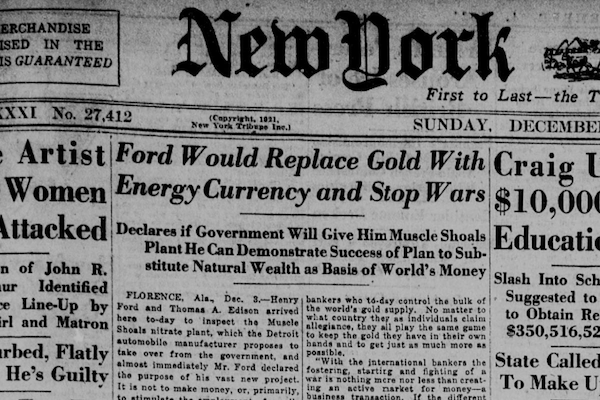
Money: Energy’s Fake Plastic Nose
Posted July 18, 2024
Chris Campbell
Back in the day, we used to trade seashells.
Then some wizard came up with an idea:
"Hey, what if we smash these shiny hard rocks until they're flat and shiny, then act as if they have the value we stamp on them?"
And just like that, coins were born.
Fast forward through a montage of kings, wars, and questionable fashion choices, and some horrible person thought, "You know what would make this better? If we made money out of dead trees!"
Enter the era of paper money, where we all agreed that paper rectangles are worth something.
Right now, we’re going through another shift.
The bits of paper are dying. Numbers on a screen rules everything around me. By 2030, less than 1% of transactions will happen in cash.
The question on everyone’s mind: What does the future of money look like?
Compute as Currency
According to OpenAI’s Sam Altman, the next big leap isn't JUST going to be some new form of digital cash…
It's going to be compute power itself.
See, Altman's betting on an explosion in demand for compute. We're talking levels hard to even imagine right now.
It has little to do with running chatbots or rendering graphics, either. We're looking at simulating entire economies, revolutionizing scientific research, modeling the brain, stuff like that.
In this world, compute is the limiting factor for future progress. More compute means smarter AI, better scientific models, faster breakthroughs.
Let’s imagine Altman’s right: The economy is measured in compute.
Could this be the holy grail of currency?
Energy in Disguise
Relatively long ago….
Buckminster Fuller and Henry Ford - both intellectual titans in their own rights - proposed a bold experiment: a currency directly tied to energy.
Their argument: all forms of money are just proxies for energy usage.
Whether it's human labor, fossil fuels, or electricity, currency allows us to:
- Store Energy: Save our work for later use.
- Transfer Energy: Trade our effort for someone else's.
- Measure Energy: Quantify how much work something is worth.
Thus, they concluded…
ALL forms of currency, at their core, are ways of quantifying and trading energy…
Currency, in other words, is energy in disguise - money is energy with a fake plastic nose.
Compute as Currency?
While there's a relationship between computation and energy use, they are not identical.
Computation involves processing information, which requires energy, but also depends on algorithms, hardware architecture, and other factors.
BUT, Bitcoin aside (for now)...
It’s the closest yet proposed to stripping off the disguise.
As Fuller and Ford argued:
By using a universal, objective measure of value, the system could eliminate abstractions that create distortions - intentional or not - in the global financial system.
This, they said, would free us from the machinations of central banks and the military-industrial complex.
Gold, in this case, is insufficient.
Here’s the front page of the New York Tribune on Dec. 4, 1921.

Onto something?
Mint Your Own Energy
The argument: an energy-based currency would make the value of energy production and consumption more transparent.
People would be more aware of the energy costs associated with different products and services.
Moreover, anyone who can produce energy efficiently could essentially "mint" money.
In that case, the direct link between energy production and economic value would spur innovation in smaller-scale, high-efficiency energy technologies.
Every backyard inventor and garage tinkerer would suddenly be on the front lines of the energy revolution.
Decentralized production, among other things, would reduce the need for long-distance power transmission, making the overall system more efficient.
As Fuller and Ford alluded:
This would lead to a significant redistribution of power, away from those who control financial abstractions and towards those who can innovate in the realm of the real, the hard, the physical.
(HMMM…)
Here’s one thing we know:
No matter what the future of money looks like - fake plastic noses or not:
AI will have a role to play in this. Crypo, too. Especially when they make love and have babies.
More on that tomorrow.
